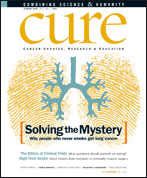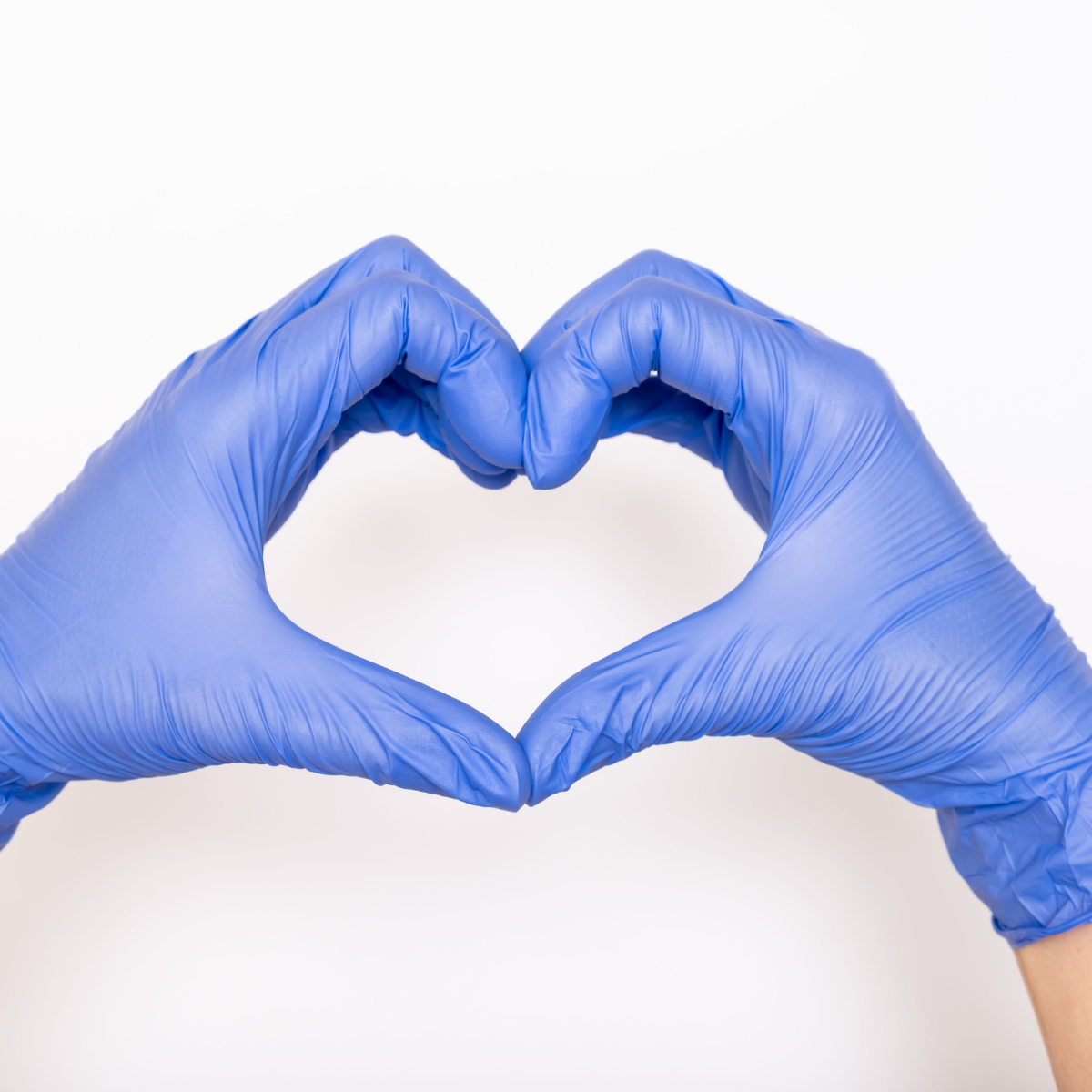Publication
Article
CURE
Precious Tumor
Author(s):
What happens to cancer tissue and why it's so valuable to researchers.
Tissue collection is nothing new. Each day, biospecimens are deposited at blood banks, at sperm laboratories, in pathology labs, and other locations. More than 307 million such specimens are stored in the United States alone, according to an estimate from RAND, the nonprofit research organization.
When a patient undergoes surgery, cancerous tissue is only reserved for research if sufficient tissue remains after diagnosis, cancer staging, and other necessary diagnostic tests are completed, says Virginia LiVolsi, MD, a pathologist and principal investigator of the eastern division of the NCI-funded Cooperative Human Tissue Network.
Some breast cancers, for example, are caught so early, and are thus so small, that no excess tissue is left after diagnosis-related testing. It’s a missed opportunity, given that these malignancies could provide a pathological window into how cancer grows and spreads, says Dr. LiVolsi, also professor of pathology and laboratory medicine at the University of Pennsylvania. “Maybe in a few years, we’ll be able to work on those [very small] tumors,” she says. “Imagine how crucial it is to be able to work on those early, early cancers?”
When the tissue is collected for research, a number of factors influence the quality of the specimen, Dr. LiVolsi says. The most important is prompt freezing following removal, ideally within 15 minutes.
RNA and proteins are particularly vulnerable to environmental influences, including changes in temperature, Eiseman says. “We are looking at changes in expression in RNA and proteins we weren’t able to look at before,” she says. “We are looking at a detailed level. We are picking up such small changes. And any outside (environmental) disturbance may change what we are observing.”
The Los Angeles County Germ Cell Tumor and Tissue Bank Resource, which works with three nearby medical facilities, stations a technologist near the operating room to ensure the tissue is frozen within the 15-minute window, says Sue Ellen Martin, MD, PhD, a principal investigator at the bank and associate professor of pathology at the University of Southern California. The Los Angeles biorepository, which the Lance Armstrong Foundation helped fund, has already collected tissue from 60 adults with testicular cancer since its founding in 2005, Dr. Martin says. An additional 20 to 25 specimens likely will be added each year, she says.
Of the 307 million-plus specimens in the United States, Eiseman estimates more than 30 million have been collected specifically for research purposes. As for how many are cancer-related, a 2003 NCI report identified roughly 125 NCI-supported programs that collected, stored, and maintained more than four million biospecimens. That figure is just a best estimate, says Vaught, adding it’s unknown exactly how many biospecimens are stored in NCI programs, given the early lack of central coordination among the programs.
Working with biospecimens, researchers can help unravel the secrets of cancer’s development and treatment in numerous ways.
New drug targets can be identified, and lab work also can elucidate the mechanisms that spur the spread of cancer. One NCI study is incorporating the use of a genomic test in an effort to predict which women with early breast cancer face a higher risk for recurrence. But tissue without the patient’s medical history attached is not as beneficial, researchers say.
While patient-identifying information is stripped, such as name and Social Security number, researchers benefit from details about the diagnosis, treatment, family history, and other medical insights in order to better link cellular markers with medical outcomes, Dr. LiVolsi says. “A researcher could say, ‘I want tissue from 50 cases of colon cancer, 25 of whom (the patients) survived and 25 whom didn’t survive. I want to see what specific molecular signatures, protein products, etcetera were found in the cases of the group that survived. Was there any difference?’”
Obtaining patient consent for cancer research, though, has become more difficult for some researchers in the wake of HIPAA, says Sandra Horning, MD, professor of medicine/oncology and bone marrow transplantation at Stanford University School of Medicine, and a past president of the American Society of Clinical Oncology.
If a patient’s tissue was banked prior to HIPAA going into effect in April 2003, it may be unclear when and whether it can be used, Dr. Horning says. Locating a patient to obtain consent years later, when a researcher might request tissue to test a particular hypothesis, isn’t always feasible, she says.
In their new guidelines, NCI officials place a high priority on informed consent, Vaught says. One option provided is tiered consent in which the patient specifies the types of cancer research, or other research, the tissue can and cannot be used for, he says. The tiered approach, though, is not required and specific approaches are determined by local institutional review boards.
As they move forward, federal officials also want to promote more exchange of specimen-related data between researchers working at different institutions, Vaught says. Ideally, researchers one day could access a central data source and, for example, locate the sites where specimens with a certain type of malignancy were stored. That approach would particularly help research into rarer malignancies. “Although there are a lot of cancer patients, the tissue resources available for research into certain types of cancer are fairly limited,” Vaught says.
As the number of high-quality specimens increases, scientists will benefit from more biological resources to solve cancer’s thorniest mysteries. And, in the process, patients battling cancer can rest assured they are assisting their generation and those to come.
That figure—possibly the only comprehensive effort to quantify the nation’s biospecimen repository—is likely on the low side. At least 20 million specimens are added annually, according to authors of the 1999 RAND report. But research needs are changing just as fast.
For cancer patients, tissue analysis has already fueled treatment advances, including Gleevec® (imatinib) and Herceptin® (trastuzumab), just to name two. Several patient advocacy groups, sold on the lifesaving potential, have funded or launched their own tissue banks to foster future discoveries, among them the Lance Armstrong Foundation and the Multiple Myeloma Research Foundation, which started the Multiple Myeloma Research Consortium in 2004.
“Having access to really good tissue has been a problem for researchers for a long time,” says Doug Ulman, president of the Lance Armstrong Foundation. “The best reason for us to do this is it would provide a centralized (testicular) tissue resource for researchers all over the world.”
Even the American Society of Clinical Oncology, a professional oncology organization with close to 25,000 members, declared in the January 1, 2007 issue of Journal of Clinical Oncology that, in addition to increased cancer funding, the most critical need to accelerate cancer research is greater access to biospecimens.
The growing demand for high-quality tissue specimens, researchers say, is driven by sophisticated laboratory techniques. Today’s researchers can not only analyze DNA, but also scrutinize the more fragile RNA and proteins that can influence the cancerous development of individual cells. By working with translucent slices of tissue, or even a few malignant cells, they can identify crucial genetic markers that may spawn new screening tests, influence treatment decisions or provide targets for cancer-fighting drugs.
Those research findings, though, are only as sound as the underlying quality of the tissue, says Jim Vaught, PhD, special assistant for biorepository science at the National Cancer Institute’s Office of Biorepositories and Biospecimen Research, which was started two years ago. “The problem has been that tissues have been collected in very inconsistent ways,” he says.
Inconsistent collection and storage practices can taint results, particularly when a researcher works with tissue from several laboratories, says Elisa Eiseman, PhD, senior natural scientist with RAND, who has authored two reports on biospecimen-related issues, including the 1999 report. “If the researcher gets 100 (tissue) samples from three different banks, because they don’t know every detail about how it was collected and how it was stored, the results they get may not be comparable,” she says.
In recent years, NCI officials have been working to standardize biorepository practices, in an effort to boost the number of high-quality specimens available for research. A biorepository, also informally known as a tissue bank, ranges in size and scope from a single freezer in a community hospital to a sprawling research program with millions of specimens.
The Office of Biorepositories and Biospecimen Research (biospecimens.cancer.gov) released a draft of its best practice guidelines in April, designed to standardize storage, collection, informed consent, and other practices. The final version is slated to be released this summer.






